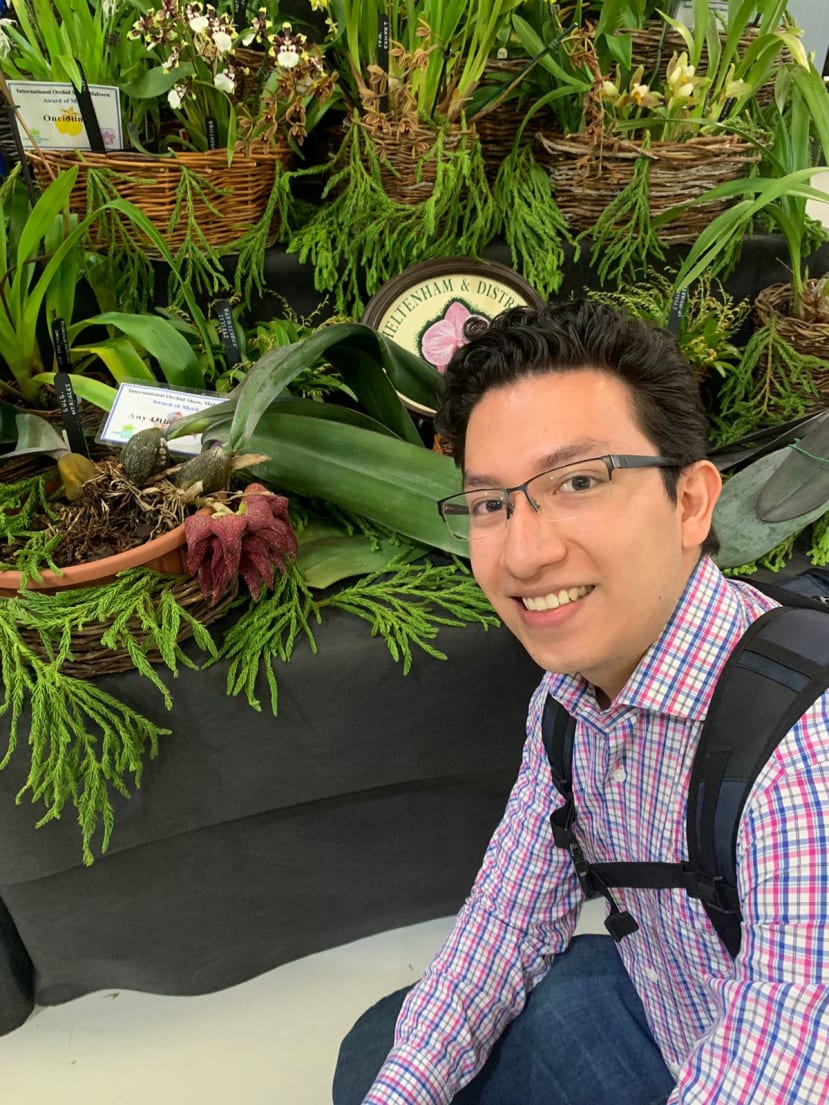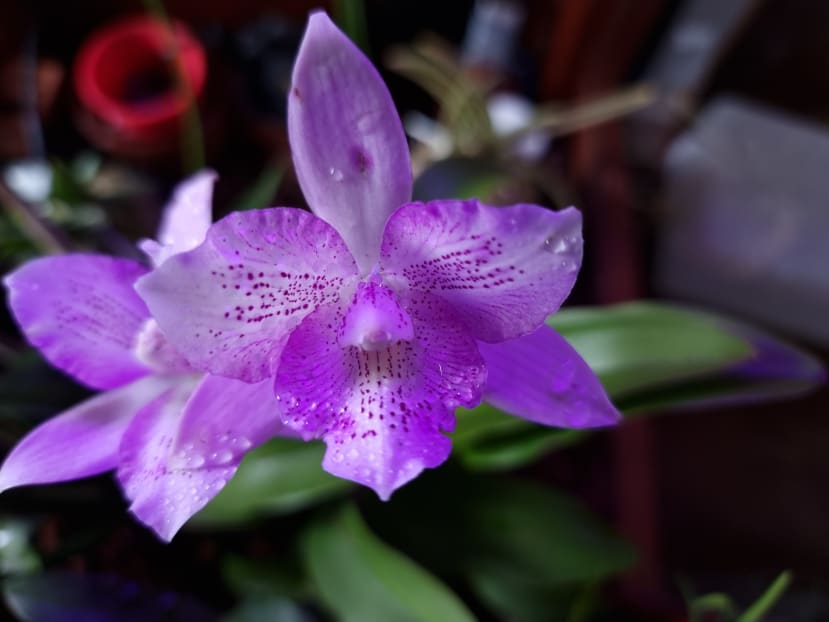Electronic orchidarium
Follow articleHow do you feel about this article? Help us to provide better content for you.
Thank you! Your feedback has been received.
There was a problem submitting your feedback, please try again later.
What do you think of this article?
Hi, thank you for taking the time to read about my project, watch this intro video:
Orchids & Me
Wild orchid spotting in Sheffield (top) Malvern international orchid expo (bottom)
My name is Andres Ramos, I'm a Materials science and nuclear engineering student at the University of Sheffield. I have been captivated by botany for as long as I can remember and my greatest interest in the field is orchids. Mexico is home to over 1500 species of orchids that range from Epiphyte (on trees), lithophyte (on rocks) and terrestrial. Each species and each genus tells a story of evolution and adaptation to generate a unique biological system with its environment. This is the case for most environments and climates around the world as orchids have populated all continents except the arctic. This incredible range also indicates that orchids have had the chance to select their preferred climates which often are humid warm rain and cloud forests. The optimal conditions have created the most exotic combinations of shape, colour and scent that exist (in my opinion) in the natural world. Orchids have enchanted pollinators from the smallest insects to birds who fall prey to their beauty and mimicry. Consequently, it is near impossible to grow these genuses and species in regions that do not have those conditions (such as the UK). Fortunately, orchid societies, their members and nurseries have created greenhouses that are able to get to the conditions ideal to grow the orchids. This sounds simple enough but the work they put in is constant and challenging. This is why often collections start becoming more focused on one specific genus of orchids that thrives in the conditions set. This also means that these orchids can be grown only in medium to large size greenhouses that are very complex to maintain, clever growers usually find ways to grow them as windowsill plants but this requires careful monitoring of light, temperature, humidity and nutrition. This is what inspired me to make my project.
Cattleya from my collection
The Design
Once I had identified the problem, I developed the concept of a small-scale tabletop orchidarium that could blend in with house furniture and be fully automated to maintain the conditions of the wettest of rainforests. I quickly developed a model with the components that would require and submitted it to this competition hours before the deadline. I was surprised to have won but thrilled to take on the challenge.
First CAD concept design
Woodworking
Making a greenhouse from nothing was very challenging, I had seen people use terrarium glass, aquariums and glass and metal cabinets as a base. I decided that I needed a design that was more friendly that bridged between nature and home and needed a material to meet that goal. Wood was the best material for the job. This would mean however that I needed a way to craft it into a greenhouse, waterproof it and make it integratable with the electronics. I ruined a few slabs of wood until I decided to use Japanese-style woodworking (no nails) and Sapele wood, a West African hardwood similar to mahogany (but cheaper!). I then started working at the Student-led workshop IForge where I received assistance from a group of representatives (reps) on proper workshop safety and how to operate machines. After a month and a half of almost daily tinkering, soldering, sealing, sawing, laser cutting and joining the work was done. The design features a hollow base for the electronics, a tall backboard for miniature orchids, two front columns to hold the acrylic and a lid.
Electronics
Initial Arduino circuit and humidifier nest for 3D print
Initial components testing and code/serial outputs from sensors
The electronics are the heart of this project and design. Initially, I thought it would be as simple as getting one sensor and controlling the conditions with an Arduino. It turned out to be much more complex than that. As the considerations grew, I ended up with the components list: water pump, water valve, blue and red LEDs, waterproof fan, humidifier, heater, temperature and humidity sensor, soil humidity sensor and water level sensor. With the help of a good friend and tons of internet tutorials, I was able to build the circuit with transistors, voltage converters, diodes and two power supplies (one exclusive to the water pump). It was then down to producing a code that could translate the inputs of the sensors and generate the appropriate response in the components to recreate the ideal conditions for the orchids (Borneo for instance). After looking at weather data for humidity, light cycles, temperature cycles, rain frequency and nutrition requirements for the plants. The code was built to keep a minimum humidity of 80%, a temperature during the day of (23-26)C and (13-16) at night with light cycles of 14 hours in summer and 10 hours in winter. The Arduino code can still be improved by adding any climate parameter to the initial driving frame. The orchidarium can simulate the climate and rain patterns of Brazil, Mexico, Madagascar or any tropical forest so any species from those habitats can be grown inside. I plan on further developing this project by implementing communication with a mobile application in a user-friendly way to track the conditions and most importantly the stories and Botanics of the plants inside the greenhouse. I believe the best way of making people care about our beautiful planet is not by fear but by bringing the astonishing beauty that has already started to fade away in some places in the world.
Final product
Top view of orchidarium
I would like to thank RS Components and IForge for their support with this project. This is definitely just the start. Introduction video











